Miguel Ballesteros
Unraveling and Mitigating Safety Alignment Degradation of Vision-Language Models
Oct 11, 2024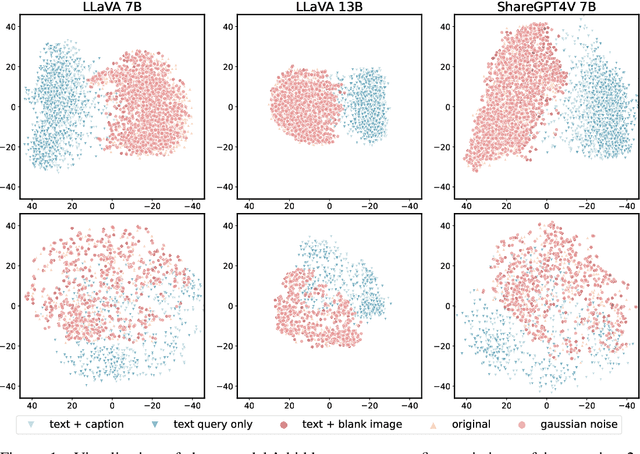
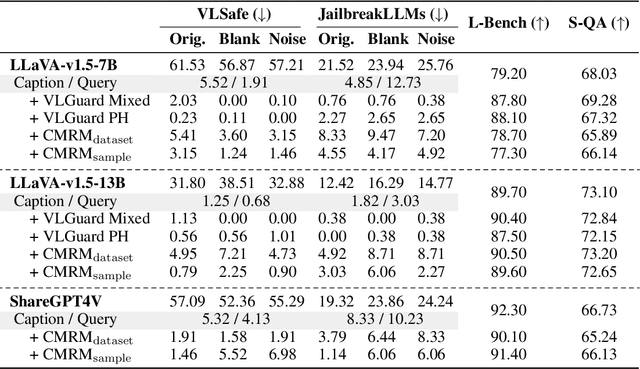
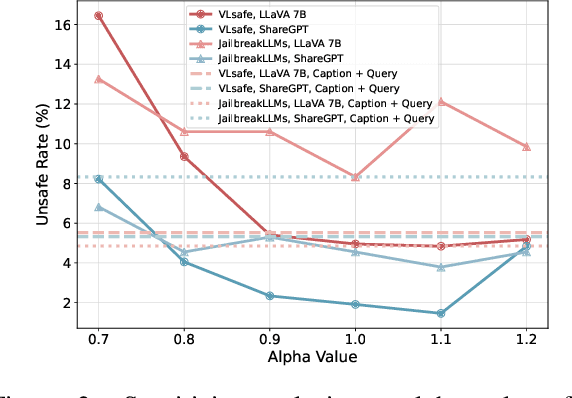

Abstract:The safety alignment ability of Vision-Language Models (VLMs) is prone to be degraded by the integration of the vision module compared to its LLM backbone. We investigate this phenomenon, dubbed as ''safety alignment degradation'' in this paper, and show that the challenge arises from the representation gap that emerges when introducing vision modality to VLMs. In particular, we show that the representations of multi-modal inputs shift away from that of text-only inputs which represent the distribution that the LLM backbone is optimized for. At the same time, the safety alignment capabilities, initially developed within the textual embedding space, do not successfully transfer to this new multi-modal representation space. To reduce safety alignment degradation, we introduce Cross-Modality Representation Manipulation (CMRM), an inference time representation intervention method for recovering the safety alignment ability that is inherent in the LLM backbone of VLMs, while simultaneously preserving the functional capabilities of VLMs. The empirical results show that our framework significantly recovers the alignment ability that is inherited from the LLM backbone with minimal impact on the fluency and linguistic capabilities of pre-trained VLMs even without additional training. Specifically, the unsafe rate of LLaVA-7B on multi-modal input can be reduced from 61.53% to as low as 3.15% with only inference-time intervention. WARNING: This paper contains examples of toxic or harmful language.
Detecting Training Data of Large Language Models via Expectation Maximization
Oct 10, 2024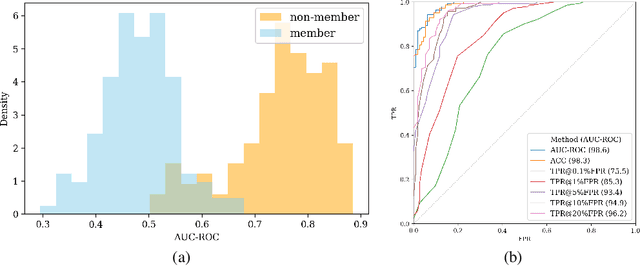
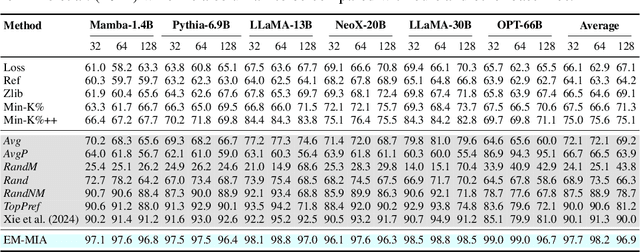

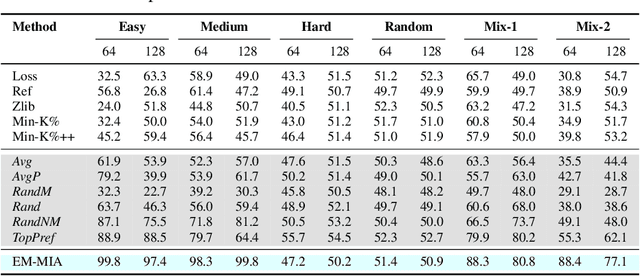
Abstract:The widespread deployment of large language models (LLMs) has led to impressive advancements, yet information about their training data, a critical factor in their performance, remains undisclosed. Membership inference attacks (MIAs) aim to determine whether a specific instance was part of a target model's training data. MIAs can offer insights into LLM outputs and help detect and address concerns such as data contamination and compliance with privacy and copyright standards. However, applying MIAs to LLMs presents unique challenges due to the massive scale of pre-training data and the ambiguous nature of membership. Additionally, creating appropriate benchmarks to evaluate MIA methods is not straightforward, as training and test data distributions are often unknown. In this paper, we introduce EM-MIA, a novel MIA method for LLMs that iteratively refines membership scores and prefix scores via an expectation-maximization algorithm, leveraging the duality that the estimates of these scores can be improved by each other. Membership scores and prefix scores assess how each instance is likely to be a member and discriminative as a prefix, respectively. Our method achieves state-of-the-art results on the WikiMIA dataset. To further evaluate EM-MIA, we present OLMoMIA, a benchmark built from OLMo resources, which allows us to control the difficulty of MIA tasks with varying degrees of overlap between training and test data distributions. We believe that EM-MIA serves as a robust MIA method for LLMs and that OLMoMIA provides a valuable resource for comprehensively evaluating MIA approaches, thereby driving future research in this critical area.
Active Evaluation Acquisition for Efficient LLM Benchmarking
Oct 08, 2024Abstract:As large language models (LLMs) become increasingly versatile, numerous large scale benchmarks have been developed to thoroughly assess their capabilities. These benchmarks typically consist of diverse datasets and prompts to evaluate different aspects of LLM performance. However, comprehensive evaluations on hundreds or thousands of prompts incur tremendous costs in terms of computation, money, and time. In this work, we investigate strategies to improve evaluation efficiency by selecting a subset of examples from each benchmark using a learned policy. Our approach models the dependencies across test examples, allowing accurate prediction of the evaluation outcomes for the remaining examples based on the outcomes of the selected ones. Consequently, we only need to acquire the actual evaluation outcomes for the selected subset. We rigorously explore various subset selection policies and introduce a novel RL-based policy that leverages the captured dependencies. Empirical results demonstrate that our approach significantly reduces the number of evaluation prompts required while maintaining accurate performance estimates compared to previous methods.
General Purpose Verification for Chain of Thought Prompting
Apr 30, 2024



Abstract:Many of the recent capabilities demonstrated by Large Language Models (LLMs) arise primarily from their ability to exploit contextual information. In this paper, we explore ways to improve reasoning capabilities of LLMs through (1) exploration of different chains of thought and (2) validation of the individual steps of the reasoning process. We propose three general principles that a model should adhere to while reasoning: (i) Relevance, (ii) Mathematical Accuracy, and (iii) Logical Consistency. We apply these constraints to the reasoning steps generated by the LLM to improve the accuracy of the final generation. The constraints are applied in the form of verifiers: the model itself is asked to verify if the generated steps satisfy each constraint. To further steer the generations towards high-quality solutions, we use the perplexity of the reasoning steps as an additional verifier. We evaluate our method on 4 distinct types of reasoning tasks, spanning a total of 9 different datasets. Experiments show that our method is always better than vanilla generation, and, in 6 out of the 9 datasets, it is better than best-of N sampling which samples N reasoning chains and picks the lowest perplexity generation.
NewsQs: Multi-Source Question Generation for the Inquiring Mind
Feb 28, 2024Abstract:We present NewsQs (news-cues), a dataset that provides question-answer pairs for multiple news documents. To create NewsQs, we augment a traditional multi-document summarization dataset with questions automatically generated by a T5-Large model fine-tuned on FAQ-style news articles from the News On the Web corpus. We show that fine-tuning a model with control codes produces questions that are judged acceptable more often than the same model without them as measured through human evaluation. We use a QNLI model with high correlation with human annotations to filter our data. We release our final dataset of high-quality questions, answers, and document clusters as a resource for future work in query-based multi-document summarization.
Characterizing and Measuring Linguistic Dataset Drift
May 26, 2023Abstract:NLP models often degrade in performance when real world data distributions differ markedly from training data. However, existing dataset drift metrics in NLP have generally not considered specific dimensions of linguistic drift that affect model performance, and they have not been validated in their ability to predict model performance at the individual example level, where such metrics are often used in practice. In this paper, we propose three dimensions of linguistic dataset drift: vocabulary, structural, and semantic drift. These dimensions correspond to content word frequency divergences, syntactic divergences, and meaning changes not captured by word frequencies (e.g. lexical semantic change). We propose interpretable metrics for all three drift dimensions, and we modify past performance prediction methods to predict model performance at both the example and dataset level for English sentiment classification and natural language inference. We find that our drift metrics are more effective than previous metrics at predicting out-of-domain model accuracies (mean 16.8% root mean square error decrease), particularly when compared to popular fine-tuned embedding distances (mean 47.7% error decrease). Fine-tuned embedding distances are much more effective at ranking individual examples by expected performance, but decomposing into vocabulary, structural, and semantic drift produces the best example rankings of all considered model-agnostic drift metrics (mean 6.7% ROC AUC increase).
Taxonomy Expansion for Named Entity Recognition
May 22, 2023Abstract:Training a Named Entity Recognition (NER) model often involves fixing a taxonomy of entity types. However, requirements evolve and we might need the NER model to recognize additional entity types. A simple approach is to re-annotate entire dataset with both existing and additional entity types and then train the model on the re-annotated dataset. However, this is an extremely laborious task. To remedy this, we propose a novel approach called Partial Label Model (PLM) that uses only partially annotated datasets. We experiment with 6 diverse datasets and show that PLM consistently performs better than most other approaches (0.5 - 2.5 F1), including in novel settings for taxonomy expansion not considered in prior work. The gap between PLM and all other approaches is especially large in settings where there is limited data available for the additional entity types (as much as 11 F1), thus suggesting a more cost effective approaches to taxonomy expansion.
A Weak Supervision Approach for Few-Shot Aspect Based Sentiment
May 19, 2023Abstract:We explore how weak supervision on abundant unlabeled data can be leveraged to improve few-shot performance in aspect-based sentiment analysis (ABSA) tasks. We propose a pipeline approach to construct a noisy ABSA dataset, and we use it to adapt a pre-trained sequence-to-sequence model to the ABSA tasks. We test the resulting model on three widely used ABSA datasets, before and after fine-tuning. Our proposed method preserves the full fine-tuning performance while showing significant improvements (15.84% absolute F1) in the few-shot learning scenario for the harder tasks. In zero-shot (i.e., without fine-tuning), our method outperforms the previous state of the art on the aspect extraction sentiment classification (AESC) task and is, additionally, capable of performing the harder aspect sentiment triplet extraction (ASTE) task.
Comparing Biases and the Impact of Multilingual Training across Multiple Languages
May 18, 2023Abstract:Studies in bias and fairness in natural language processing have primarily examined social biases within a single language and/or across few attributes (e.g. gender, race). However, biases can manifest differently across various languages for individual attributes. As a result, it is critical to examine biases within each language and attribute. Of equal importance is to study how these biases compare across languages and how the biases are affected when training a model on multilingual data versus monolingual data. We present a bias analysis across Italian, Chinese, English, Hebrew, and Spanish on the downstream sentiment analysis task to observe whether specific demographics are viewed more positively. We study bias similarities and differences across these languages and investigate the impact of multilingual vs. monolingual training data. We adapt existing sentiment bias templates in English to Italian, Chinese, Hebrew, and Spanish for four attributes: race, religion, nationality, and gender. Our results reveal similarities in bias expression such as favoritism of groups that are dominant in each language's culture (e.g. majority religions and nationalities). Additionally, we find an increased variation in predictions across protected groups, indicating bias amplification, after multilingual finetuning in comparison to multilingual pretraining.
Simple Yet Effective Synthetic Dataset Construction for Unsupervised Opinion Summarization
Mar 21, 2023Abstract:Opinion summarization provides an important solution for summarizing opinions expressed among a large number of reviews. However, generating aspect-specific and general summaries is challenging due to the lack of annotated data. In this work, we propose two simple yet effective unsupervised approaches to generate both aspect-specific and general opinion summaries by training on synthetic datasets constructed with aspect-related review contents. Our first approach, Seed Words Based Leave-One-Out (SW-LOO), identifies aspect-related portions of reviews simply by exact-matching aspect seed words and outperforms existing methods by 3.4 ROUGE-L points on SPACE and 0.5 ROUGE-1 point on OPOSUM+ for aspect-specific opinion summarization. Our second approach, Natural Language Inference Based Leave-One-Out (NLI-LOO) identifies aspect-related sentences utilizing an NLI model in a more general setting without using seed words and outperforms existing approaches by 1.2 ROUGE-L points on SPACE for aspect-specific opinion summarization and remains competitive on other metrics.
 Add to Chrome
Add to Chrome Add to Firefox
Add to Firefox Add to Edge
Add to Edge